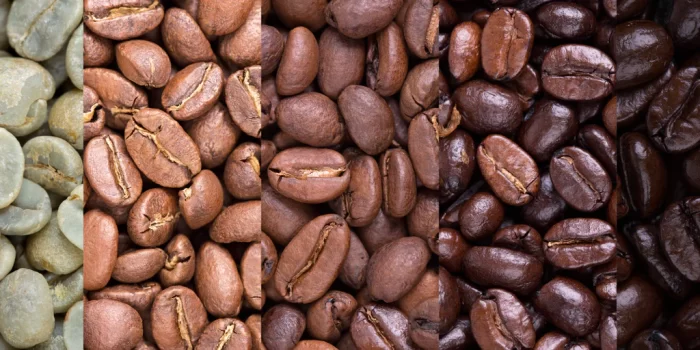Coffee beans provide the core foundation driving your daily brew’s flavor and aroma experience. Rather than an afterthought, they deserve attention and understanding to help figure out your preferred coffee bean traits. With endless origins and roasts spanning from supermarket staples to artisan exotic arrays, In this post we talk about How To Choose Coffee Beans.
By learning what production and processing factors influence taste profiles along with defining attributes like acidity, sweetness or body that resonate most with your palate,With knowledge on how to choose coffee beans, you can make informed coffee bean choices tailored to your rituals.
Understand Terminology
First, familiarize yourself with some standard coffee vocabulary to establish descriptive traits to look for:
Acidity – Bright, tart flavors ranging from fruity to wine-like, often complementary to sweetness at lower levels. High acidity presents sour/fermented.
Bitterness – Pleasing at subtle levels but unpleasantly harsh when heightened, typically increased by darker roasts.
Sweetness – Sugar browning reactions during roasting introduces caramel, cocoa and malt-like sweetness balancing acidity.
Body – Mouthfeel perception describing viscosity, richness and weight. Full body feels creamy; thin is watery.
Aroma – Dry fragrance before brewing. Wet aroma is steaming cup smell. Flavors release fully when hot water contacts grounds.
Then within those broad sensory scopes exist endless nuances – herbal, nutty, chocolately, citrusy, earthy, floral etc. The origin and roasting process brings out these taste dimensions.
Evaluate Roast Level
Roast level makes one of the biggest flavor impacts and divides into four main categories:
Light Roast
Features toasted grain, cereal and wheat tones with delicate sweetness. Acidity is highlighted with low bitterness. Lighter brown color.
Medium Roast
Balances some acidity with moderate body plus amplifies sugar caramelization. Nutty and cocoa hints emerge. Medium brown beans.
Dark Roast
Bittersweet chocolate, woodsy and charcoal notes come forward as acids diminish. Oils emerge on nearly black beans bringing heavier body.
Each level builds progressively more roast character on top of origin character. Pick roast intensities complementing food pairings and your palate – do you prefer lighter or robust styles? Understanding differences here helps guide selection.
Factor in Bean Origin
Coffee plant varieties, soil conditions, processing techniques and regional terroirs craft inherent qualities before roasting even begins. Key origin profiles include:
Central American Beans
Lively sweetness, medium body and crisp clean snap. Includes smooth Guatemalan and Costa Rican coffees.
South American Beans
Often herbaceous and nutty with rustic medium body. Features Colombia mild reviving acidity and Brazil’s classic caramelly vibe.
African Beans
Intense tropical fruit acidity even in dark roasts with complex flavor spectrum and tea-like mouthfeel at times. Ethiopian varieties exude these traits.
Indonesian Beans
Lower acidity yet still plenty complexity ranging from earthy Sumatran to spice-forward Sulawesi beans. Also where most roasted robusta comes from.
Added Flavors
For flavored beans, ensure natural oil extracts get used, not chemical perfumes. Flavors should complement the inherent coffee profile, not disguise poor beans. Stay sparing on flavored portion versus higher quality plain beans in the mix for best results.
Evaluate Bean Freshness
Seek reputable local roasters actively rotating through green inventory to produce freshly roasted coffee beans ideally used within 2 weeks after roasting, or a month maximum. Brown gas-barrier valve bags help longevity. Pressing out air before sealing maintains freshness too but avoid fully vacuum sealing.
Signs of stale coffee beans feature lackluster aromatics, faster grinding, bland faded taste and oil slickness on the bean surface.
Set Budget Expectations
Higher grade specialty coffee sells as premium product. However paying exorbitant prices doesn’t guarantee satisfaction. Set reasonable spending limits per pound then sample various roasts and origins available in that budget until identifying preference based on the descriptive traits outlined here. Building direct trade relationships with smaller operations helps ensure ethical, sustainable sourcing too.
Taste Before Committing
Don’t be shy requesting samples – reputable roasters will happily provide. Cup several options side-by-side controlling amount, grind and water quality for fair assessment. If new to evaluating nuances, use process of elimination first. Compare two very different beans types, determine which direction better suits your needs, then narrow into more varieties closer to preference. Keep tasting notes!
Soon enough you’ll begin recognizing ideal aroma, acidity, body profiles and other positive attributes that put a smile on your face and have you eagerly anticipating that next satisfying sip. From there selecting which coffee bean to purchase and enjoy on the regular becomes much more clear.
The Perfect Bean For You
With the wide range of bean types at your fingertips, grab a cup and start sampling until you find flavors that make your tastebuds light up. Then seek those sensory elements in future coffee bean selection using the vocabulary and production insight here to guide you. I hope this How To Choose Coffee Beans post helps you.

